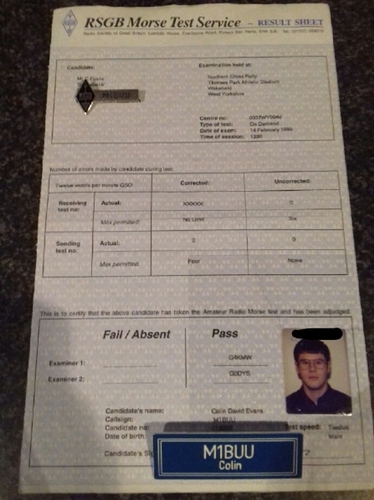Ok so i know it’s been covered to death but thought I’d briefly mention my latest go at trying to learn the code.
I’ve just received my new F817 and have only got round to admiring how tiny it is and to charge the battery that came with it. I also was told that CW really helps bring this amazing looking rig to life. So for about the fourth time in my life I’m going to have a go at learning the code. I have the G4FON program at home and have used lcwo.net in the past.
One thing I have learnt from reading all your advise on here is that I only need to do a little bit every day. i thought in the past I had to do 30minutes or more every day and i just didnt end up finding the time constantly to do it.
Another thing i did in the past was to learn it truly using koch method. This i don’t think helped.
This time its different. . .so far.
This time i have taken your advise and am currently doing around 10-15 minutes a day and currently using the IZ2UUF Morse trainer app on my Android phone. I have set the characters to around 15-20wpm but have spaced out the words and the timing between the spaces are slower. I think this helps me personally as I think getting the full alphabet in my head is the first thing to do then concentrate on increasing in speed(lowering character spacing etc)
So far its been an easy thing to keep up. I can do 10-15 minutes during my lunch with my phone and headphones on and could even put a short bit on a night if i have time.
So far I have gotton upto 3 characters( M K R ) in a couple days but thats probably because thats the first letters in most koch strings and i have done those levels before.
So far I’m enjoying it and realising i dont have to do hours a day to learn it has put a positive spin on learning the code and that eventually i’ll have the full alphabet in my head.
Another thing i’m trying out at the moment, again from advise read on here and adapted, is to try and read the bcc new site whilst doing the morse code training. I have found it easier as it keeps my mind occupied and stop it thinking about the morse and the morse flows to the paper more easily. Putting my brain in the way just slows and confuses the morse.
thanks for the advise and I’m currently still enjoying the 3 or 4 days I’ve spent starting to learn the code, again.
73
Anthony



